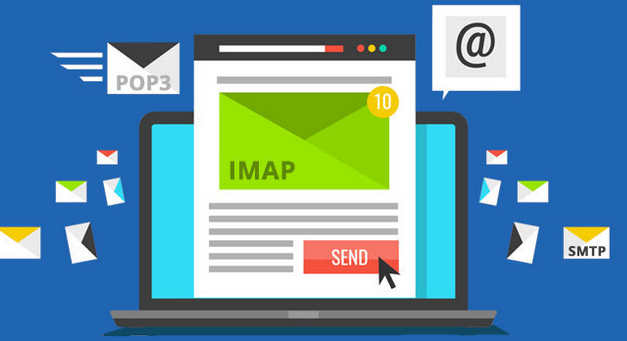When managing email under email hosting, the choice between IMAP (Internet Message Access Protocol) and POP3 (Post Office Protocol version 3) can significantly impact how you access and organize your messages. Understanding the differences between these two protocols is crucial for optimizing your email experience. Here’s a detailed comparison to help you make an informed decision.
Table of Contents
1. Overview IMAP vs POP3
IMAP (Internet Message Access Protocol): IMAP is designed to keep your emails on the server and manage them remotely. When you use IMAP, your email client synchronizes with the server, reflecting changes across all devices. This protocol allows you to access your emails from multiple devices—such as a smartphone, tablet, and computer—while maintaining a consistent view of your inbox and folders.
POP3 (Post Office Protocol version 3): POP3, on the other hand, is designed to download emails from the server to a single device. Once the emails are downloaded, they are usually removed from the email hosting server, making them accessible only from that particular device. POP3 is more suitable for users who primarily access their email from one device and prefer to keep a local copy of their messages.
2. Access and Synchronization
IMAP vs POP3
IMAP:
- Synchronization: IMAP synchronizes emails and folders across all devices. Actions such as reading, deleting, or moving emails are updated on the server, ensuring that changes are reflected on all devices.
- Accessibility: You can access your email from any device with an internet connection. This is particularly useful if you switch between different devices or need to access your email while traveling.
POP3:
- Download and Storage: POP3 downloads emails from the server to your device and typically removes them from the server. This means that once an email is downloaded, it’s stored locally and is no longer available on the server.
- Device Limitation: Because POP3 removes emails from the server, accessing your email from multiple devices can be challenging. Each device that uses POP3 will have its own copy of emails, leading to discrepancies if emails are managed on different devices.
3. Email Management
IMAP:
- Folder Organization: IMAP supports multiple folders (e.g., Inbox, Sent, Drafts, Custom folders) on the server. Any folder organization you create is reflected across all devices.
- Search and Filters: IMAP allows server-side search and filters, making it easier to find emails without having to download everything first.
POP3:
- Local Storage: Since emails are stored locally on your device, your email client’s storage and management tools are crucial. Email organization, such as sorting and filtering, happens only on the device where the email is stored.
- Backup and Recovery: Managing backups can be more cumbersome with POP3, as you need to ensure that your local storage is regularly backed up to prevent data loss.
4. Offline Access
IMAP:
- Partial Offline Access: IMAP does allow some offline access. You can typically view and compose emails offline, but synchronization with the server will only occur when you’re back online. Changes made offline will be updated on the server once connectivity is restored.
POP3:
- Full Offline Access: Since emails are downloaded and stored on your device, you can access and manage them entirely offline. This is beneficial for users who need to access their email in areas with limited or no internet connectivity.
5. Security and Privacy
IMAP:
- Security: IMAP can be configured with encryption (e.g., SSL/TLS) to protect your data while in transit. However, your emails are stored on the server, which means they are subject to the security measures of your email provider.
- Privacy: IMAP’s reliance on server storage means that your email provider has access to your emails. Choosing a provider with strong security practices is crucial for maintaining privacy.
POP3:
- Security: Like IMAP, POP3 can be used with encryption. However, because emails are downloaded and stored locally, the security of your local device is also a factor in protecting your email data.
- Privacy: With POP3, your emails are less exposed on the server after download, potentially offering a higher degree of privacy if your local device is secure.
6. Use Cases
IMAP:
- Ideal for users who need to access email from multiple devices.
- Suitable for users who require real-time synchronization and server-based email management.
POP3:
- Best for users who primarily use a single device for email.
- Appropriate for users with limited internet access who need full offline access to their emails.
Conclusion
Choosing between IMAP vs POP3 depends on your email usage patterns and needs. IMAP is the better choice for those who require seamless synchronization across multiple devices and prefer server-side email management. POP3 is suitable for users who need offline access and manage their email primarily from one device. Understanding these protocols will help you tailor your email setup to better suit your personal or professional requirements.

